Aquaculture one-stop solution provider & liquid storage equipment manufacturer.
Recirculating Fish Farming: Things You May Want to Know
Shandong Wolize Biotechnology Co., Ltd. mainly produces recirculating fish farming. The kind of product, made of carefully-chosen raw materials, is superior in their performance. Each part of the product can perform very well after being tested several times. With the input of our advanced design concepts of our experienced staff, it is also novel in their design. In addition, advanced equipment ensures the product can be finely processed, which also guarantees the quality.
WOLIZE has always been working on how to make our brand stand out so that we have strengthened and reinforced our brand mission - offer more authentic and transparent customer services. We have been seriously carrying out the brand mission and have made the voice of this brand mission being heard consistently so that our brand image becomes highly recognizable on multiple channels.
Professional custom service plays an important part in the development of a company. At WOLIZE, we can customize products like recirculating fish farming with different styles, various specifications and so on. Give us the exact drawing, draft or ideas, perfect customized products will be safely delivered to you.
With the continuous development of aquaculture, the selection and construction of fish ponds have become particularly important. Galvanized sheet fish ponds have gradually become a popular choice for breeders and gardening enthusiasts due to their unique material properties and diverse application scenarios.
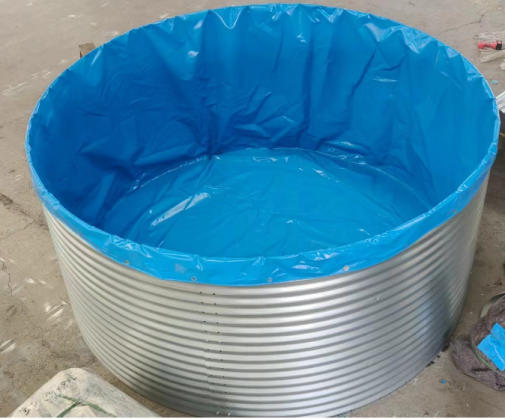
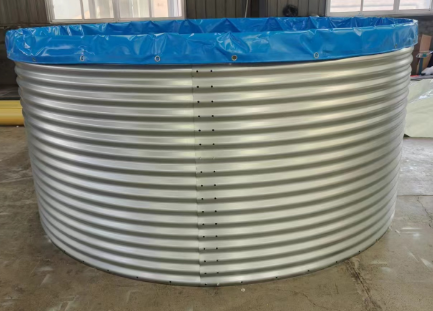
The advantages of galvanized sheet fish pond
1. Strong corrosion resistance
Galvanizing treatment forms a protective film on the surface of the steel plate, which effectively resists the erosion of moisture and oxygen and significantly reduces rust. This feature ensures long-term use of the fish pond in various environment.
2. Stable structure
Galvanized sheet fish ponds usually use thicker steel plates, which have higher strength and compressive resistance, can withstand greater water pressure, and are suitable for large-scale breeding.
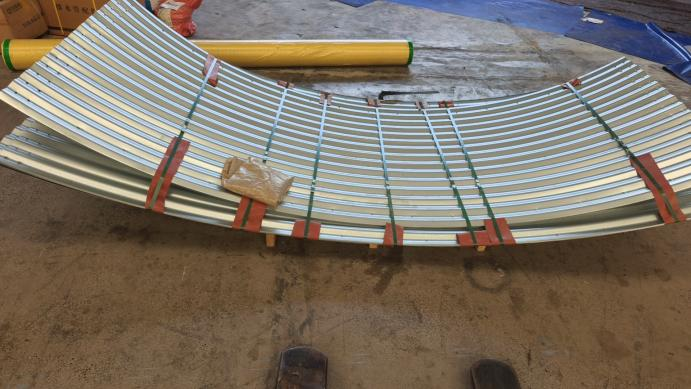
3.Flexibility and convenience
The fish pond is relatively simple to assemble and disassemble, suitable for temporary or long-term use. Whether it is on a farm, in a garden or in the community, the galvanized sheet fish pond can be quickly built and easily moved.
4.Easy to maintain
The smooth surface makes cleaning and maintenance easier, reducing the growth of algae and bacteria, thereby maintaining good water quality and conducive to the healthy growth of fish.
Application Scenarios
1.Flowing Aquaculture System
Galvanized sheet fish ponds are widely used in commercial farms and are suitable for breeding fish, shrimp and other aquatic products, providing an ideal environment for breeding.
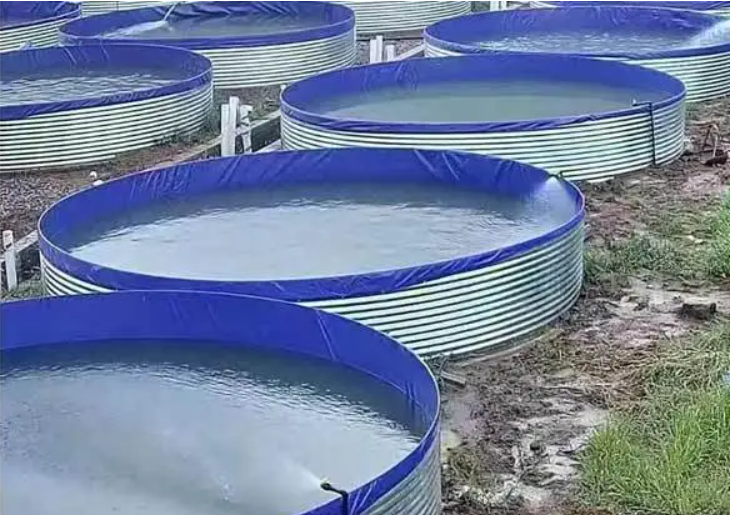
2.Home Gardening
Many families choose galvanized sheet fish ponds as ornamental fish ponds, which not only beautify the environment but also add fun to life.
3.Education and Research
In the teaching and scientific research of aquaculture, galvanized fish ponds can be used as experimental water bodies to facilitate ecological research and exploration of aquaculture technology.
4.Landscape water bodies
In parks, scenic spots and other places, galvanized fish ponds can be used as decorative water bodies to attract tourists and enhance the aesthetics of the venue.
Summarize
Galvanized fish ponds have become a popular choice in aquaculture and landscape design due to their corrosion resistance, structural stability and easy maintenance. Whether for commercial breeding or home viewing, they can provide an ideal water environment and help the sustainable development of aquaculture. With the advancement of technology, the application of galvanized fish ponds will become more extensive, promoting the innovation and development of the aquaculture industry.
Catfish farming needs to pay attention to the following:
Catfish is an omnivorous fish with a gluttonous nature. Therefore, it is necessary to correctly grasp the amount of feeding, so as to ensure how much fish there are in the pond and how much feed to prevent blind feeding. At the same time, it is necessary to implement point-by-point feeding, spread bait evenly, eat small meals frequently, and feed enough to prevent uneven hunger and fullness, resulting in polarization. At the same time, in the early stages of fish fry cultivation, animal feed should be mainly used for intensive cultivation. As the fish grows, some plant feed should be gradually switched to a combination of animal and plant feed. The daily feeding amount should be controlled at about 5-8% of the total weight of the fish, and the feeding amount must be adjusted every one week or half a month to make the feeding amount more reasonable.
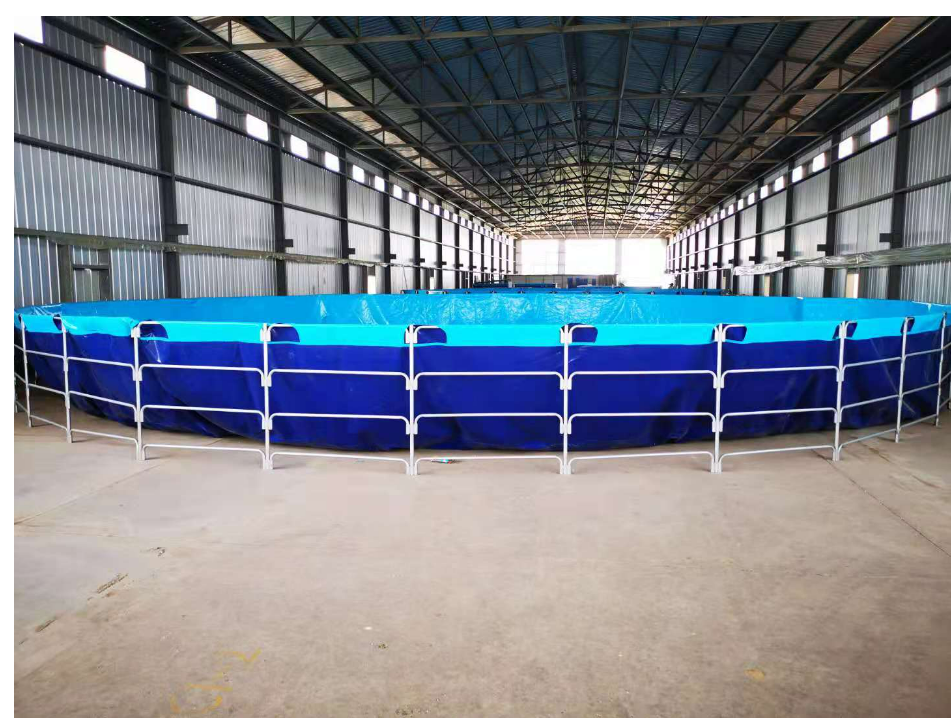
Catfish are ferocious and greedy when implementing rotational fishing. When feeding, big fish often grab the food first, while small fish cannot eat the food, resulting in a growing gap in fish size. Therefore, a rotation should be carried out before catching catfish. Catch and raise separately, raise large and small fish in separate ponds, so that the growth can be balanced. This is one of the important measures to increase production.
Catfish overwintering is encouraged. According to the growth habits of catfish, after the winter pause, use the pond and remove excess silt and debris, then deepen the water level, stock about 500 kilograms of loaches per acre of water surface, and retain some water hyacinths and water hyacinths floating on the water surface. Aquatic plants such as water lilies create a quiet and comfortable living environment for catfish
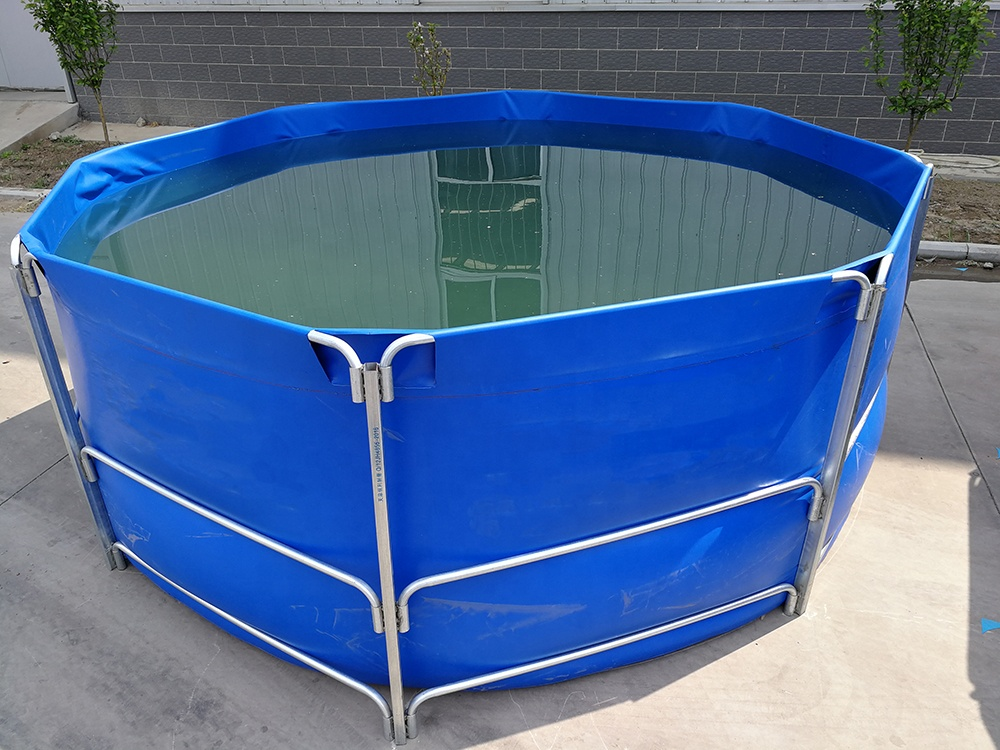
Catfish has fewer diseases. Once the disease is found, it can be splashed in the whole pool containing 20 mg of bleach per liter of water.
The above are the precautions for catfish farming, I hope it will be helpful to you.
Water is the environment for fish to survive. Better water quality can reduce the occurrence of fish diseases and is more conducive to the growth and survival of fish. In actual production, water quality can often be judged by changes in water body color, ammonia nitrogen content, and sediment color.
1. The red water color of the red water pond is mainly caused by diatoms or golden algae becoming the dominant species. Usually, there is no serious problem, but once the weather suddenly changes and causes a large number of algae to die, toxins will be produced and the water body will deteriorate, and even directly cause Fish poisoned and died. Therefore, once the pool water turns red, it must be improved in time. When the weather is fine, first use Siji'an or quaternary ammonium salt iodine, etc. to spray and disinfect, and then spray with hydrogen peroxide, strong chlorine essence, etc. on the second day, and then top dress the fertilizer once after 3 days depending on the situation.
2. Black water When the pool water is black, it indicates that more organic matter in the pool has not been transformed in time, such as residual bait, animal remains, excrement, and humus at the bottom of the pool. Hydrogen, ammonia nitrogen, nitrite and other harmful substances endanger the health of aquatic animals, reduce their immunity, lead to the infection of pathogenic microorganisms, and even cause fish flooding in ponds. Once this kind of black water is found, apply chlorine-containing drugs such as dioxychloride once on the first day to the second day to oxidize too much organic matter. After 3 days, use Baifeng Vitality Water Purification Wang Quanchi to splash once.
3. White turbid water When the pool water is white and turbid, it indicates that there are too many organic oxygen-consuming substances in the pond. Relatively speaking, there are few microorganisms that decompose large-scale organic matter into nutrient salts. The material circulation in the pond is destroyed, the water in the pond is close to aging, and there is a severe lack of oxygen. The fish in this kind of pond are generally prone to floating heads from early morning to dawn before the sun rises. When the pool water is found to be cloudy, apply "Shui bao Oxygen Pack" on the first day to oxidize the organic matter in time after flocculation. On the second day, apply Bai feng Aquatic Bao once to the whole pool to increase the active microorganisms in the pool and promote water body circulation.
4. Water with high ammonia nitrogen content is fed with high-protein feed, chilled meat, or intensive fish ponds that feed on live fish, such as crab ponds, prawn ponds, snake head ponds, and mandarin fish ponds. After adding high-protein bait, the content of ammonia nitrogen in the metabolic products is too high, which will affect the feeding and growth of aquatic animals, reduce their immunity, and easily cause parasite or pathogenic microorganism infection. Therefore, for intensive ponds that feed on high-protein feed, chilled meat or live fish, apply ammonia or bottom net once every 10 to 15 days to degrade ammonia nitrogen in time. If through the water quality test, if the ammonia nitrogen content in the pool water is found to be seriously exceeding the standard, you should apply ammonia net and oxygen treasure to the pool in time, and then use fertilizer water element and fertilizer water treasure once on the third day to increase the active microorganisms in the pool and promote plank tonic The reproduction and growth of organisms enhance the material circulation capacity of the water body.
5. Due to the deposition of humus in the pool water, animal residues, bait, and feces sink to the bottom of the pool and then decompose, causing the bottom mud of the pond to turn black and stinky, which easily produces harmful substances such as methane, hydrogen sulfide, and nitrite. It is very easy to pose a threat to aquatic animals living in the middle and lower layers, such as crucian carp, grass carp, herring, crab, shrimp, mandarin fish and other species. When the situation is serious, the aquatic animals in the middle and lower layers of the pond often float in the middle and upper layers, and do not want to go to the normal living water layer. If the above situation occurs, apply Baifeng Aquatic Po every 10 days to 15 days to increase beneficial microorganisms, accelerate the transformation of organic matter or humus that sinks to the bottom of the pool, and avoid blackening and odor of the bottom mud and the production of methane, Harmful substances such as hydrogen sulfide and nitrite. If you find that the bottom mud in the pond is black and the water is stinky, you should immediately take measures to change the water. After changing the water, apply Vitality Clean Water King on the first day, and quick-acting fertilizer Shuibao on the second day to adjust the water quality.
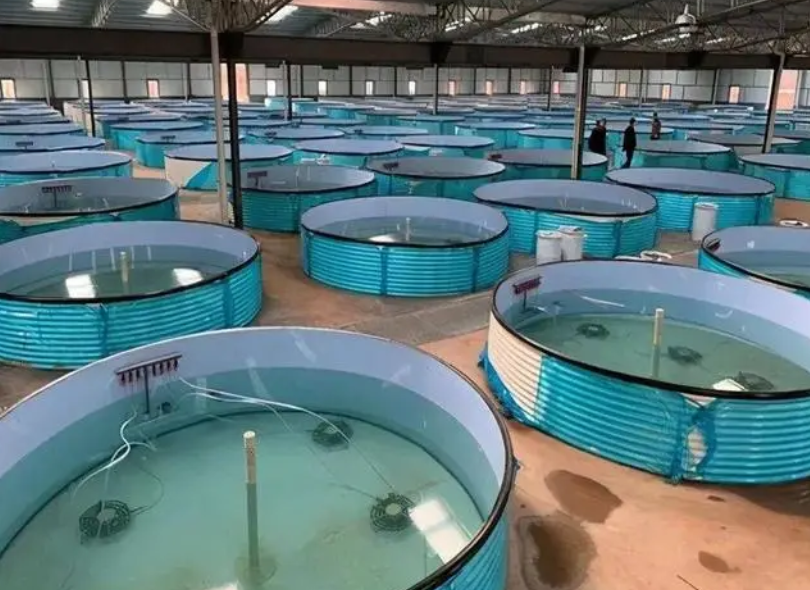
Traditional aquaculture methods are fraught with several challenges that hinder both sustainability and profitability. These challenges include resource depletion, significant environmental impact, and high operational costs.
Resource Depletion:
The reliance on wild-caught fish for feed in traditional farming can disrupt ocean ecosystems and deplete protein sources for vulnerable coastal communities. This dependency not only strains natural resources but also increases the risk of overfishing.
Environmental Impact:
Waste and effluents generated by traditional systems can lead to significant pollution. Harmful chemicals and untreated waste can contaminate water bodies, harming local flora and fauna and raising regulatory concerns. This not only jeopardizes the ecological health of the environment but also incurs additional costs in terms of fines and remediation.
Challenges in Achieving High Profitability:
High feed consumption, energy costs, and waste generation can severely strain budgets and reduce efficiency. The constant need for water, feed, and labor leads to higher operational expenses, which in turn reduce profitability. Additionally, the unpredictability of market prices for feed and the volatility of fish prices add further financial risks.
The Advantages of Recirculating Fish Farming
Sustainable Resource Utilization:
By reusing water and waste, recirculating systems significantly reduce the need for additional water sources and minimize waste. This not only conserves resources but also lowers operational costs. For example, by recycling water, farms can reduce their reliance on freshwater sources and lower the cost of water treatment.
Environmental Protection:
Closed-loop systems are biosecure, reducing the risk of disease transmission and ecological disruption. This biosecurity ensures that the fish remain healthy and disease-free, thereby reducing the need for antibiotics and other chemicals. Additionally, the reduced environmental impact of these systems helps in maintaining the overall ecological balance.
Energy Efficiency:
These systems often require less energy due to optimized water and waste management. Efficient use of resources leads to cost savings and reduced carbon footprints, making recirculating farms more attractive to environmentally conscious consumers and corporations.
How Recirculating Fish Farming Maximizes Profitability
Recirculating systems enhance profitability in several ways:
Economic Efficiency:
Achieving a feed conversion ratio (FCR) of one pound of wild fish to one pound of farmed fish is a significant advantage. Recirculating farms can achieve much better FCRs, reducing feed costs and increasing profitability. This efficiency is due to the optimized use of resources and the ability to produce more fish with less waste.
Continuous Production:
Efficient resource reuse allows farms to operate year-round with minimal input. This continuous production ensures a steady supply of fish, meeting market demand and maximizing output. Moreover, the ability to farm in controlled environments means that farms can avoid seasonal fluctuations in production.
Market Demand:
As consumers increasingly seek eco-friendly and organic products, recirculating fish farming aligns with market trends. This demand for sustainable seafood drives higher profitability, as consumers are willing to pay a premium for fish that are grown in an environmentally responsible manner.
The Role of Resource Recycling in Maximizing Output
Recycling water, food waste, and other byproducts significantly boosts farm efficiency. For example, fertilizers made from farm waste can reduce costs and increase productivity. Additionally, the use of waste heat from the system for growing plants can further enhance efficiency and profitability.
Environmental Benefits and Their Impact on Farming Profitability
Reduced Pollution:
Lower emissions from recirculating systems contribute to cleaner air and water, reducing legal and financial risks. This not only helps in maintaining the ecological balance but also ensures compliance with environmental regulations, which is crucial for long-term profitability.
Market Compliance:
Adherence to EU regulations like the 2030 Agenda for Sustainable Development ensures compliance with market demands, enhancing credibility and profitability. Farms that meet these standards can access premium markets and command higher prices.
Long-Term Savings:
Environmental efficiency often leads to long-term cost savings and access to premium markets, boosting profitability over the long term. This means that farms can invest in more sustainable practices without worrying about immediate financial losses.
The Future of Recirculating Fish Farming in Global Markets
The demand for sustainable aquaculture is growing worldwide. As consumers and policymakers prioritize environmental stewardship, recirculating fish farming is poised for growth in global markets. Innovations in technology and farming practices will further enhance efficiency and profitability, making this method a leading choice for future aquaculture.
The Path to Sustainable and Profitable Fish Farming
Recirculating fish farming is not only a sustainable solution but also a highly profitable one. By optimizing resource use, reducing environmental impact, and aligning with market trends, this method outperforms traditional aquaculture in profitability. As the world faces increasing demands for sustainable seafood production, recirculating fish farming emerges as the future of aquaculture, offering a pathway to both economic success and environmental protection.
By embracing recirculating fish farming, farmers can not only enhance their business performance but also contribute to a healthier planet for future generations. This innovative approach offers a sustainable and profitable solution to the challenges of traditional aquaculture, making it an essential consideration for the future of the fishing industry.
Tank Design: The Basics
The design of fish farming tanks is a crucial factor in determining sustainability. Two primary types are Recirculating Aquaculture Systems (RAS) and open water systems.
Recirculating Aquaculture Systems (RAS):
RAS systems are closed-loop systems that reuse treated water, making them highly efficient in terms of water usage. This is particularly beneficial in water-scarce regions. RAS systems also allow for precise control over water quality, reducing disease risks.
Open Water Systems:
Open water systems continuously receive fresh water and discharge treated wastewater. While they use less water, they rely on external water sources, which may be unsustainable.
A case study from Thailand demonstrates the success of an RAS system. This facility reduced water usage significantly and minimized pollutant releases.
Water Management: Recycling and Filtration
Effective water management is essential for maintaining water quality and reducing waste. Advanced recycling and filtration technologies are key components.
Water Recycling:
Water recycling techniques like reverse osmosis and sand filtration ensure clean, nutrient-free water, conserving resources and preventing eutrophication.
Filtration Technologies:
Biofiltration and mechanical filtration are critical for maintaining water quality. Biofiltration uses beneficial bacteria, while mechanical filtration removes solid particles. A comparative analysis shows that biofiltration is more efficient in maintaining water quality.
Nutrient Management: Diet and Waste
Balancing nutrients in fish diets and managing waste are crucial for sustainability.
Key Nutrients:
Fish need balanced diets that include essential proteins, fats, and carbohydrates. Ensuring a well-balanced diet leads to healthier fish and more efficient feed conversion.
Waste Reduction:
Techniques like targeted feeding and regular tank cleaning can reduce waste. Integrating waste management systems that convert fish waste into organic fertilizers or biofuels further enhances sustainability.
A case study from a Norwegian salmon farm illustrates the effectiveness of targeted feeding and regular cleaning in reducing waste and improving feed conversion rates.
Environmental Monitoring: Real-Time Insights
Real-time monitoring is crucial for maintaining sustainable fish farming practices.
Types of Sensors:
Commonly used sensors include dissolved oxygen, pH, and ammonia sensors. These sensors provide critical data for making informed decisions about water quality and fish health.
In-Depth Analysis:
A comparative analysis shows that integrated systems combining multiple sensors and real-time data analytics are more effective. These systems provide comprehensive insights, enabling timely interventions to prevent issues.
Energy Efficiency: Powering Sustainability
Energy efficiency is a key aspect of sustainable fish farming.
Importance of Energy Management:
Energy management involves optimizing the use of energy-intensive equipment like pumps and heaters to reduce energy consumption.
Case Study:
A New Zealand trout farm case study demonstrates the effectiveness of using solar energy to reduce energy costs and minimize the carbon footprint of operations.
Key Takeaways
In conclusion, maximizing sustainability in fish farming tanks requires a comprehensive approach. By choosing sustainable tank designs, implementing advanced water management, balancing diets, using real-time monitoring, and adopting energy-efficient practices, aquaculturists can achieve both environmental stewardship and economic efficiency.
Key Takeaways:
- Tank Design: Choose RAS systems or other designs that minimize water usage.
- Water Management: Use advanced recycling and filtration technologies.
- Nutrient Management: Balance diets and reduce waste.
- Environmental Monitoring: Utilize real-time monitoring systems.
- Energy Efficiency: Adopt energy-efficient practices to reduce costs and impact.
By embracing these strategies, fish farmers can contribute to a more sustainable future while ensuring the long-term viability of their operations.





